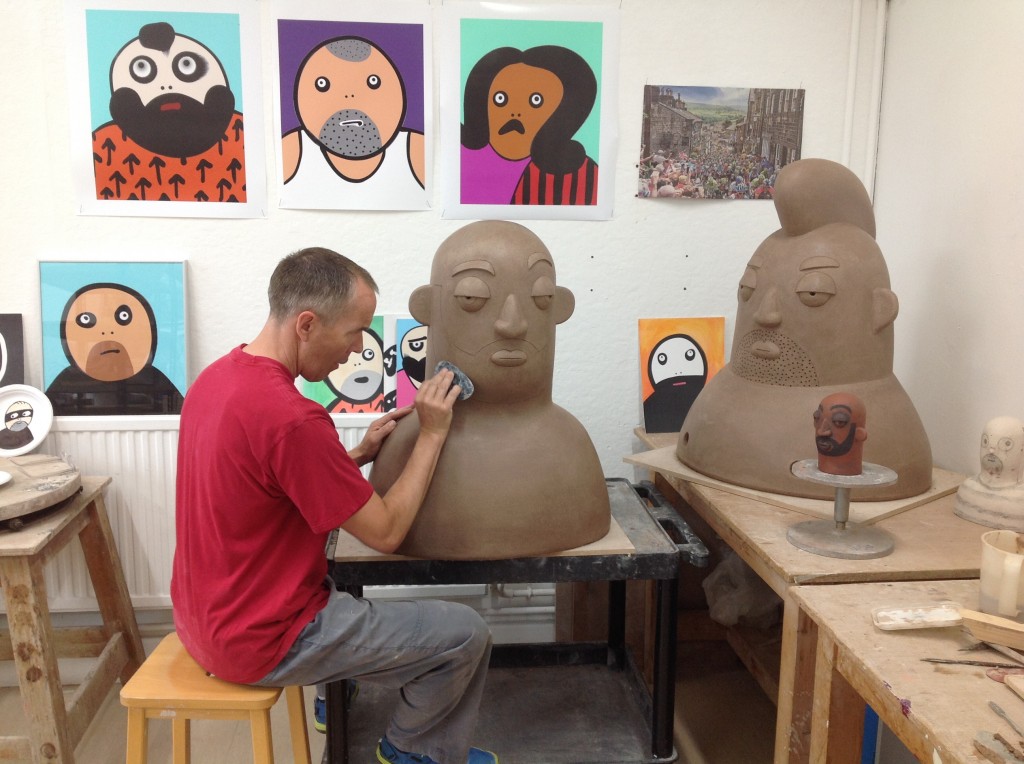I have just finished modelling the larger heads that I hope will be ready in time for my MA show at Bath Spa Uni. Initially, I found it a real challenge to translate the flat imagery of my iPad drawings into three dimensions. Now with the increase in scale, I am finding new challenges as decoration, marks and features that look good on a small piece do not necessarily transfer successfully to larger ones.
I have also been thinking about surface, and wondering how smooth I can go. Part of me would like to attempt the level of finish in an Eva Hild or Nicholas Rena piece. Yet I realise that their surfaces are made up of larger planes that can be tooled successfully post firing. This is an area I am certainly interested in, though I have made it a bit tricky with the addition of facial features on my work. I even considered using the clay as a skeleton, and cover the inevitable (?) post-firing undulations with automotive filler, before painting or gilding. However, it might be a shame to obliterate all signs of clay-ness.
I realise that I am rushing to finish these pieces, and if they were dried more slowly, their surface might warp less. I also guess that if I made them in a mould, that might help too. Maybe that is something for the future. I am using a very coarse crank clay, so I hope that will stay in place as much as possible and survive a speedy drying process.
On the question of scale, I have always been opposed to larger-than-life figurative works. I find them domineering and, as a viewer generally feel uncomfortable. Usually, political, religious or nationalistic agendas lie behind their size which makes it hard for me to see them on purely artistic merit. As my rogues are flawed and vulnerable characters, I am more than happy to make them larger-than-life, and celebrate their other-ness.

